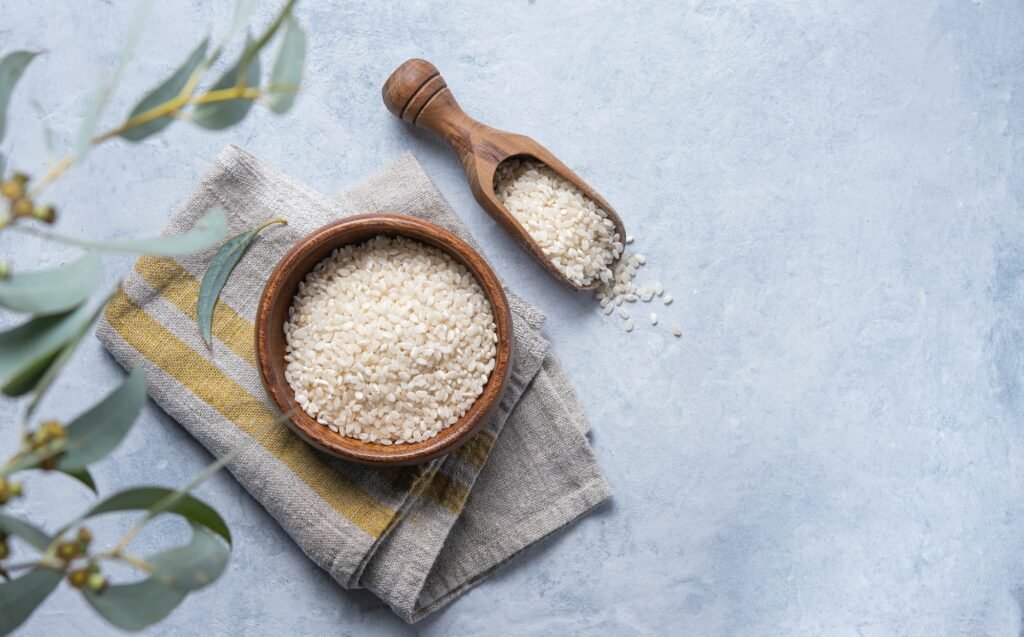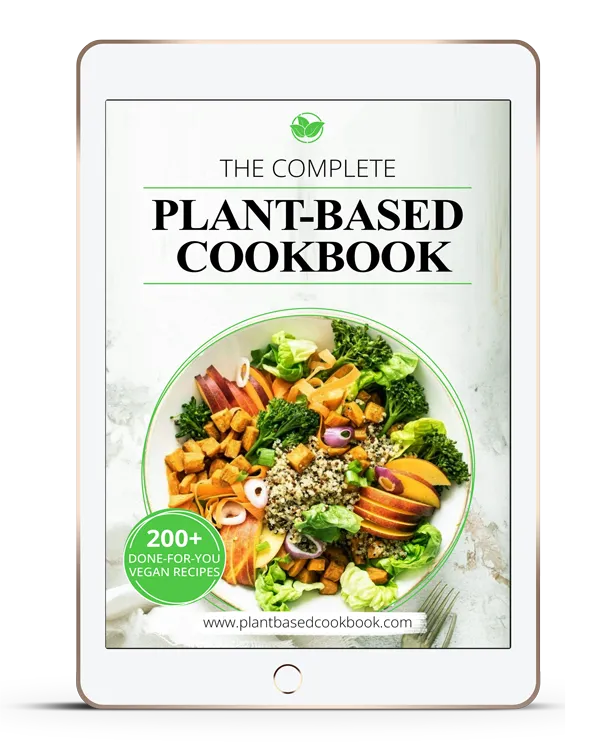Risotto is a classic Italian dish that has become popular all over the world. It’s known for its creamy texture and rich flavor, but it can be time-consuming and requires constant stirring on the stovetop.
Fortunately, making risotto in a rice cooker is an easy and convenient way to prepare this delicious dish without all the hassle.
With just a few simple steps, you can have a restaurant-quality risotto in minutes. The best part is that using a rice cooker ensures that your rice is cooked perfectly every time, resulting in the perfect texture for your risotto.
Whether you prefer chicken, mushroom, or vegetable risotto, you can easily make any version of this dish using a rice cooker. This method is perfect for those who want to enjoy homemade risotto but don’t have the time or patience for the regular stovetop method.
In this post, we’ll guide you through the process of making delicious and creamy risotto in a rice cooker. You’ll learn how to cook the rice perfectly and add all the necessary ingredients to create a flavorful dish that will impress your family and friends. So let’s get started!
Table of Contents
ToggleBenefits of using a rice cooker for risotto
Consistent Results:
One of the most significant benefits of using a rice cooker for risotto is the consistent results it provides. Making risotto on the stovetop requires constant stirring and monitoring to ensure that it cooks evenly without burning or sticking to the bottom of the pot. This can be a time-consuming and tedious process, especially if you’re making large batches.
With a rice cooker, however, you can achieve perfect risotto every time without worrying about overcooking or undercooking. The machine’s built-in sensors and timers ensure that the rice is cooked evenly and thoroughly, resulting in perfectly creamy risotto with just the right texture.
Time-saving:
Another great benefit of using a rice cooker for risotto is that it saves you time. Making risotto on the stovetop can take up to 30 minutes of constant stirring, which can be exhausting and frustrating, especially if you have other tasks to attend to.
With a rice cooker, all you need to do is add your ingredients to the pot, set it to cook mode, and let it do its thing. You won’t have to stand by the stove constantly stirring or checking on your risotto’s progress. Instead, you can focus on other tasks while your machine does all the work for you.
Easy to Clean:
Cleaning up after cooking can be one of the most challenging parts of any meal preparation process. With traditional stovetop cooking methods like making risotto in a pot or pan, cleaning up afterward can take hours as food tends to stick and burn onto surfaces.
However, with a rice cooker designed explicitly for cooking risottos – cleaning becomes much easier! Rice cookers are designed with removable non-stick pans that make cleaning them an absolute breeze. All you need is some warm soapy water (or even better – pop them in your dishwasher), rinse them off thoroughly before drying them out completely – and you’re done!
Versatile:
Rice cookers are incredibly versatile machines that can be used for more than just cooking rice. You can use them to make a variety of dishes, including soups, stews, and even desserts like rice pudding.
You can experiment with different ingredients and flavors to create unique variations of the dish. For example, you could add some mushrooms or spinach to your risotto for an extra burst of flavor or try using different types of cheese to give it a new twist.
Healthier Cooking:
Using a rice cooker for risotto is also a healthier cooking option compared to traditional stovetop methods. With a rice cooker, you don’t need to use as much oil or butter as you would when cooking on the stove. This means that your risotto will be lower in fat and calories while still being deliciously creamy and flavorful.
Additionally, because the machine cooks the rice evenly without burning or sticking, there’s less chance of creating harmful acrylamides – chemicals that form when foods are cooked at high temperatures for long periods.
Many chefs and home cooks alike swear by using rice cookers for making risottos. In fact, some professional kitchens even use industrial-sized rice cookers to prepare large batches of risotto quickly and efficiently.
Sauteing the rice for perfect risotto in a rice cooker
Sautéing the Rice for Perfect Risotto in a Rice Cooker
Sautéing the rice is a crucial step in making perfect risotto in a rice cooker. This process helps to bring out the nutty flavor of the rice and also ensures that each grain is coated with oil, which prevents it from clumping together during cooking.
Start by heating up some olive oil in the rice cooker. Olive oil is an excellent choice because it has a high smoke point and imparts a rich flavor to the dish. Once the oil is hot, add finely chopped onions and other aromatics like garlic or shallots. These ingredients will add depth and complexity to your risotto.
Keep stirring constantly to prevent the rice from sticking to the bottom of the cooker. Constant stirring also ensures that each grain of rice gets evenly coated with oil, which will help it cook more evenly later on.
Once the onions turn translucent, add the rice and sauté for a few minutes until it turns slightly golden brown. This step helps to toast the grains of rice, which brings out their nutty flavor.
It’s important to keep stirring constantly during this step as well. If you don’t stir enough, some grains may get too browned while others remain undercooked.
As you sauté, pay attention to how much liquid is being absorbed by the rice. You want just enough oil to coat each grain without any excess pooling at the bottom of your cooker.
If you notice that there’s too much liquid accumulating at once, reduce the heat slightly or even remove some liquid from your mixture before continuing with sautéing process further.
Remember that patience is key when sautéing risotto in a rice cooker! It can take anywhere from 5-10 minutes for this process depending on how much you’re cooking and how hot your stove top burner happens to be.
The end result should be perfectly toasted grains of rice that are evenly coated with oil and have a rich, nutty flavor. This will help to create a deliciously creamy risotto that your family and friends will love.
Tips for Perfect Sautéed Risotto in a Rice Cooker
Here are some tips to keep in mind as you sauté rice for perfect risotto in a rice cooker:
Achieving Creamy Sauce in Your Rice Cooker Mushroom Risotto
If you’re a fan of risotto, you know that achieving the perfect creamy texture can be a challenge. Fortunately, with the help of your rice cooker and a few simple tips, you can create a deliciously creamy mushroom risotto that will impress even the most discerning taste buds.
Use Chicken Stock Instead of Water
One of the easiest ways to add more flavor to your mushroom risotto is to use chicken stock instead of water. The chicken stock will infuse the rice with rich, savory flavors that will complement the earthy taste of the mushrooms. You can either make your own chicken stock or use store-bought broth.
Sauté the Mushrooms in Butter
To enhance the flavor and texture of your mushrooms, it’s best to sauté them in butter before adding them to your rice cooker. This step will give your mushrooms a slightly crispy exterior while keeping them tender on the inside. It will also help release their natural flavors and aromas.
Add a Splash of Chicken Broth Halfway Through Cooking
To keep your risotto moist and creamy throughout the cooking process, add a splash of chicken broth halfway through cooking. This extra liquid will help prevent the rice from drying out and sticking together while also adding more depth to its flavor profile.
Stir Frequently While Cooking
Stirring frequently while cooking is essential when making risotto. It helps release starch from the rice grains, which creates that signature creaminess we all love about this dish. Be sure not to over-stir though as this could break down too much starch and result in mushy risotto.
Add Grated Cheese at the End
Once your risotto is cooked, it’s time to add grated cheese! Parmesan or Pecorino Romano are great choices for mushroom risottos as they have nutty notes that pair well with earthy mushrooms. Stir the cheese in until it’s melted and fully incorporated into the dish.
Add a Tablespoon of Butter for Extra Creaminess
For an extra creamy finish, add a tablespoon of butter to your risotto after adding the cheese. This will give your dish a luxurious texture that’s sure to impress. Stir until the butter is fully melted and mixed in with the risotto.
Incorporating these tips into your rice cooker mushroom risotto recipe will result in a rich, creamy, and flavorful dish that everyone will love. Don’t be afraid to experiment with different ingredients or techniques to make this classic Italian comfort food even more delicious!
A Simple and Delicious Rice Cooker Risotto Recipe
Arborio rice is the key ingredient for making risotto in a rice cooker. This short-grain Italian rice variety has high starch content that gives risotto its creamy texture. When cooked, the starches are released and create a velvety sauce that coats each grain of rice. Arborio rice is widely available in supermarkets and specialty stores, and it’s worth seeking out for making the perfect risotto.
To make risotto in a rice cooker, follow the instructions on your machine for cooking arborio rice. Most models have a specific setting for cooking this type of rice, which usually involves adding water or broth to the pot and pressing a button to start the cooking process.

While the arborio rice cooks, you can prepare the other ingredients that will flavor your risotto. Saute mushrooms and onions separately before adding them to the rice cooker. This step helps to enhance their flavors and prevent them from becoming too mushy during cooking.
Once the arborio rice is cooked, add chicken or vegetable broth gradually to the pot, stirring frequently until the liquid is absorbed before adding more. The gradual addition of liquid allows time for the starches in the arborio rice to release slowly, creating a creamy consistency without becoming too soupy.
Stirring frequently also helps to release more starches from the grains of arborio rice, resulting in an even creamier texture. It’s important not to over-stir though as this can break down some of those delicate grains.
As you add more liquid and stir frequently, keep tasting your risotto until it reaches your desired consistency. Some people prefer their risotto with more bite (al dente) while others like it softer and creamier.
When your mushroom risotto is ready, top it with grated Parmesan cheese and chopped parsley before serving hot! The nutty flavor of Parmesan cheese complements well with earthy mushrooms while parsley adds freshness and color to the dish.
Making risotto in a rice cooker is an easy and convenient way to cook this classic Italian dish. It saves time and effort compared to traditional stovetop methods, and it produces consistently delicious results. With a little practice, you can master the art of making the perfect risotto every time!
Serving and garnishing your rice cooker risotto
Once your rice cooker risotto is cooked, it’s time to serve and garnish it to perfection. Here are some tips on how to make your dish look and taste amazing.
Let It Cool Down and Thicken Up
Before serving, let your risotto sit for a few minutes to cool down and thicken up. This will allow the grains to absorb any remaining liquid and become creamier in texture.
Stir in Grated Parmesan Cheese
A tablespoon of grated parmesan cheese can go a long way in enhancing the flavor of your risotto. Stir it into the dish with a wooden spoon or spatula, making sure it is evenly distributed throughout. The cheese will melt into the hot rice, giving it a rich, savory taste.
Mix in Cooked Peas or Other Vegetables
Adding some color and texture to your risotto can make it more visually appealing as well as nutritious. Mix in cooked peas or other vegetables of your choice such as sautéed mushrooms, roasted red peppers, or steamed broccoli. These ingredients will add extra flavor and nutrients to your dish.
Garnish with Chopped Parsley
To give your risotto an extra pop of color and freshness, garnish it with chopped parsley. This herb has a mild flavor that complements the creamy richness of the risotto perfectly. Simply sprinkle some over the top before serving.
Sprinkle Black Pepper on Top
Black pepper adds a subtle kick of heat that balances out the creaminess of the dish. Sprinkle some freshly ground black pepper over the top of your risotto for added depth of flavor.
Add More Parmesan Cheese If Desired
If you’re a fan of parmesan cheese (who isn’t?), feel free to add more on top of your finished dish for added cheesiness. A little goes a long way though, so be careful not to overpower the other flavors in the dish.
Serve Hot and Enjoy
Now that your risotto is perfectly garnished, it’s time to serve and enjoy! Make sure to serve it hot while the texture is still creamy and delicious.
More Tips
Use A Rice Cooker with A Timer Function
Using a rice cooker with a timer function is an excellent way to ensure that your risotto cooks perfectly every time. You can set the timer to start cooking at a specific time so that it’s ready when you need it. This feature also allows you to focus on other tasks while the rice cooker does all the work.
Don’t Overcook Your Risotto
Overcooking your risotto will result in mushy and unappetizing rice. It’s essential to keep an eye on your dish and check it regularly towards the end of cooking to prevent overcooking. The perfect risotto should be creamy, al dente, and have distinct grains of rice.
Serve Immediately
Risotto is best served immediately after cooking while it’s still hot and creamy. If left too long, it will continue to absorb liquid and become sticky or dry out. Serve your risotto as soon as possible after cooking for the best results.
Pair With The Right Wine
Pairing wine with your risotto can elevate the flavors of both dishes significantly. Generally, white wines such as Chardonnay or Pinot Grigio pair well with most types of risotto. However, if you’re making a mushroom or truffle-based recipe, consider pairing it with red wine such as Pinot Noir or Merlot.
Conclusion: Making Perfect Risotto in a Rice Cooker is Easy and Fun!
In conclusion, using a rice cooker to make risotto has numerous benefits. Not only does it save time and effort, but it also ensures that the rice is cooked evenly and perfectly every time. By sautéing the rice before cooking, you can achieve a deliciously nutty flavor that adds depth to your dish.
To make your risotto extra creamy, be sure to use the right amount of liquid and stir frequently throughout the cooking process. Adding mushrooms or other ingredients can also enhance the flavor profile of your dish.
With our simple and delicious rice cooker risotto recipe, you can easily create a restaurant-quality meal in the comfort of your own home. And with tips and tricks for making the best rice cooker risotto, you’ll be able to impress even the most discerning palates.
So don’t be intimidated by this classic Italian dish – making perfect risotto in a rice cooker is easy and fun! With just a few simple steps, you can enjoy a warm bowl of creamy goodness any night of the week. So go ahead – turn up the heat on your rice cooker and get ready to savor every bite!





